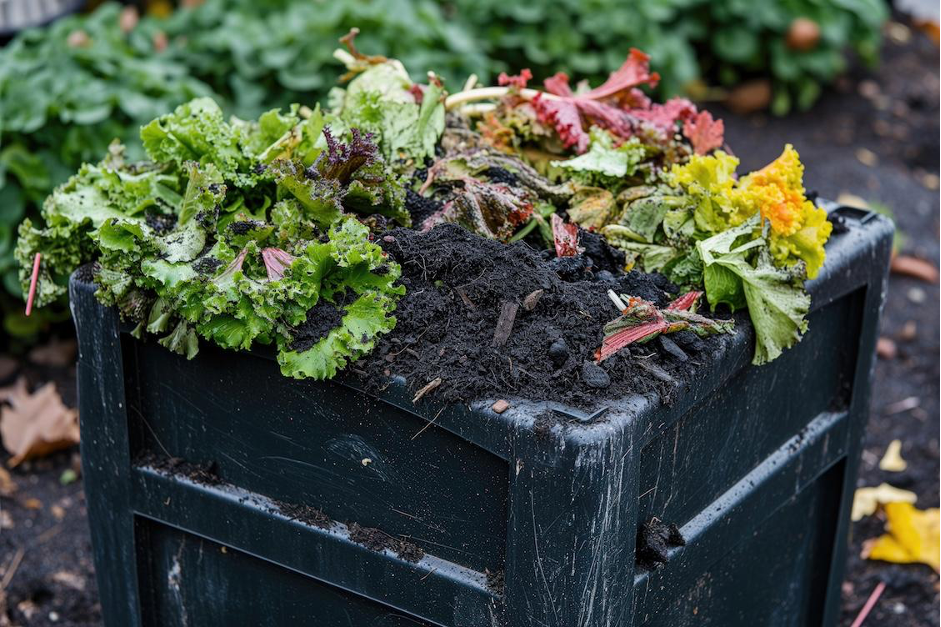 Composting is a great way to turn organic waste into valuable fertilizer for your garden. Just save kitchen scraps, such as carrot peelings and cabbage cores, and put them in a composting bin. Composting is usually done outdoors, but if you compost with worms, you can compost outdoors or indoors. If you want to start using the finished compost to fertilize your garden soon, you need to speed up the composting process. Here are 7 ways to speed up the decomposition and make fertilizer faster.
Composting is a great way to turn organic waste into valuable fertilizer for your garden. Just save kitchen scraps, such as carrot peelings and cabbage cores, and put them in a composting bin. Composting is usually done outdoors, but if you compost with worms, you can compost outdoors or indoors. If you want to start using the finished compost to fertilize your garden soon, you need to speed up the composting process. Here are 7 ways to speed up the decomposition and make fertilizer faster.
Add Composting Worms
Cold composting is usually done outside with a compost bin or compost pile. The system relies mainly on microorganisms to break down plant matter and food scraps. Cold composting can take six months to a year to produce usable compost.
Vermicomposting uses composting worms to break down plant matter and food scraps quickly. You can get finished compost in just a few months.
Combining the two techniques can produce finished compost faster than cold composting alone. Plus, you get the benefits of nutrient-rich worm castings. See more on the benefits of worm castings.
Maintain Moisture
The microbes in your compost bin need water, but not too much water. Your compost should be damp, like a wrung-out sponge. If your compost gets too dry, sprinkle in a little water. If it gets too damp, add dry material such as autumn leaves (or, if you have composting worms, more bedding).
Air Flow
The composting process works best when the composting bin has oxygen for aerobic microbes, that is, microbes that use oxygen. When there isn’t enough oxygen, anaerobic microbes (microbes that don’t use oxygen) take over, but the decomposition process will slow down. In addition, the compost begins to smell bad under anaerobic conditions. Using a bin with good airflow or turning your compost every so often will provide the oxygen needed for quick decomposition. Tumbler composters make it easy to get good air flow to every part of your compost.
Warmth In Winter
You can leave your compost bin outside all winter long, but nothing much happens. Think of the plant material in your composter as food in your house. Food in the freezer is preserved for months. Food in the refrigerator is preserved for days or weeks. On the other hand, food left out on the table or in a compost pail will spoil quickly and start to decompose. With compost, we want the plant material to break down. The decomposition process will speed up when outside air temperatures are warmer. Learn ways to compost with worms in the winter.
Chopped Plant Material Speeds the Composting Process
If you put whole leaves in your compost bin in autumn, in spring you’ll still have whole leaves. If you chop up those leaves before you place them in your bin in fall, you can harvest great compost in time for spring planting. To break up the leaves, run them over with a lawn mower or use a leaf shredder. You can even let the leaves dry and step on them—it’s great fun for the kids!
Fill Up Your Bin
In general, a larger amount of material will decompose faster than a small amount. However, if you are composting with worms, be sure to not over-feed your worms.
Balance Carbon and Nitrogen: Speed Compost Processing Time
Balancing your high-carbon materials with high-nitrogen materials will speed up your composting bin’s processing time. Note: If you are composting with worms, most of the ingredients below are not recommended. See our article, Composting Worm Feeding Guide.
High-carbon materials tend to be brown and dry, such as dried leaves, straw and wood chips. High-nitrogen materials are green, such as grass clippings, or they are colorful, such as fruit and vegetable peels. One item that does not follow that rule is manure from horses and cows. Manure is brown, but it is a high-nitrogen material.
The most efficient composting occurs with a carbon-to-nitrogen mix of about 20:1. That means that you want about 20 times more dried leaves (by volume) than fruit peels.
A chart from Cornell Waste Management Institute shows some carbon-to-nitrogen ratios for typical materials, based on dry weight. The ratios with a small first number are high-nitrogen materials and the ratios with a large first number are high-carbon materials. (Note that some of these materials have a range for their content.)
Here are the carbon-to-nitrogen ratios for some typical materials:
- Poultry manure, from 3:1 to 15:1
- Cow manure, 20:1
- Horse manure, from 20:1 to 50:1
- Food waste, about 15:1
- Fresh grass clippings, 15:1
- Sun-dried grass clippings, 20:1
- Oak leaves, 40:1 to 80:1
- Straw, 50:1 to 150:1
- Sawdust, 200:1 to 750:1
- Newsprint, 400:1 to 850:1
- Corrugated cardboard, about 560:1
In Summary: Speeding the Composting Process
The composting process will go faster or slower depending on quite a few factors. Temperature, the amount of material you are trying to compost, the ratio of brown to green matter, and the size of the material all make a difference. Adding nature’s helpers, composting worms, can dramatically reduce processing time. Uncle Jim’s Worm Farm is the #1 supplier of composting worms, including Red Worms, in the United States. Check out our website for composting information, live worms, and composting bins.









One thought on “7 Ways to Speed Up the Composting Process”
Very useful information. I hope my father-in-law will do your example too, since he does urban gardening.
I am inviting you to visit our website, Panvola, to check out our collection of beautiful mugs with printed designs.